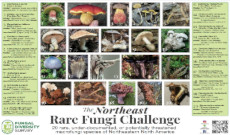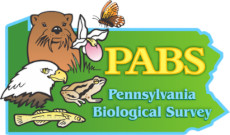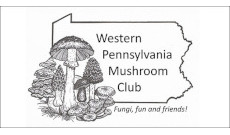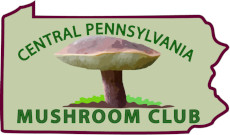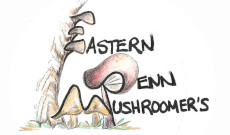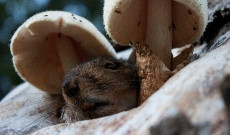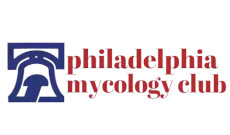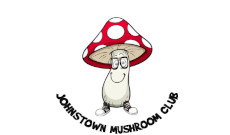 Pennsylvania Fungi
Pennsylvania Fungi
Fungi were considered “lower plants” until they were given their own taxonomic kingdom in 1969. Fungi are actually more closely related to animals than plants, but often interact with both in beneficial or detrimental ways depending on the species and environmental context. “Mushrooms” are the reproductive structure of some fungi. “Lichens” refer to a symbiosis in which a fungus (mycobiont or fungal partner) encapsulates an alga and/or cyanobacterium (photobiont or photosynthesizing partner). Lichens are named according to the mycobiont and are therefore classified as fungi.
Pennsylvania is home to over 6,000 species of fungi (inclusive of lichens and fungi that don’t produce mushrooms), the mushroom production capital of the world (Kennett Square), and seven mycology clubs. Species of fungi are continuing to be discovered in our state – many are native, some are introduced, and some are invasive.
Uncovering Pennsylvania’s fungal diversity and assessing species’ conservation status is important because many species are susceptible to the same threats as plants and animals, namely pollution, habitat loss, climate change, and invasive species, and fungi are a valuable component of our natural heritage. Fungi are an important food group to wildlife, they’re our planet’s primary recycler of nutrients, and numerous plant species depend on fungi for nutrients, water, and protection from pathogens. Fungi are also a source of life-saving antibiotics and medicine for humans, and mushroom hunting is an age-old tradition of many cultures.
Increasingly, the Pennsylvania Natural Heritage Program includes fungi in inventories and works with academic and community mycologists to develop priorities for fungal conservation. This page is new but is planned to serve as a clearinghouse for resources pertaining to fungal diversity, conservation and stewardship in Pennsylvania. PNHP does not respond to requests regarding identification of mushrooms for edibility purposes.
When you say or write “flora and fauna,” keep going and add the third “f,” funga. By including fungi in our language, we increase awareness and give them a seat at the table in conservation discussions and frameworks. Read more at: FFF – Fauna Flora Funga

